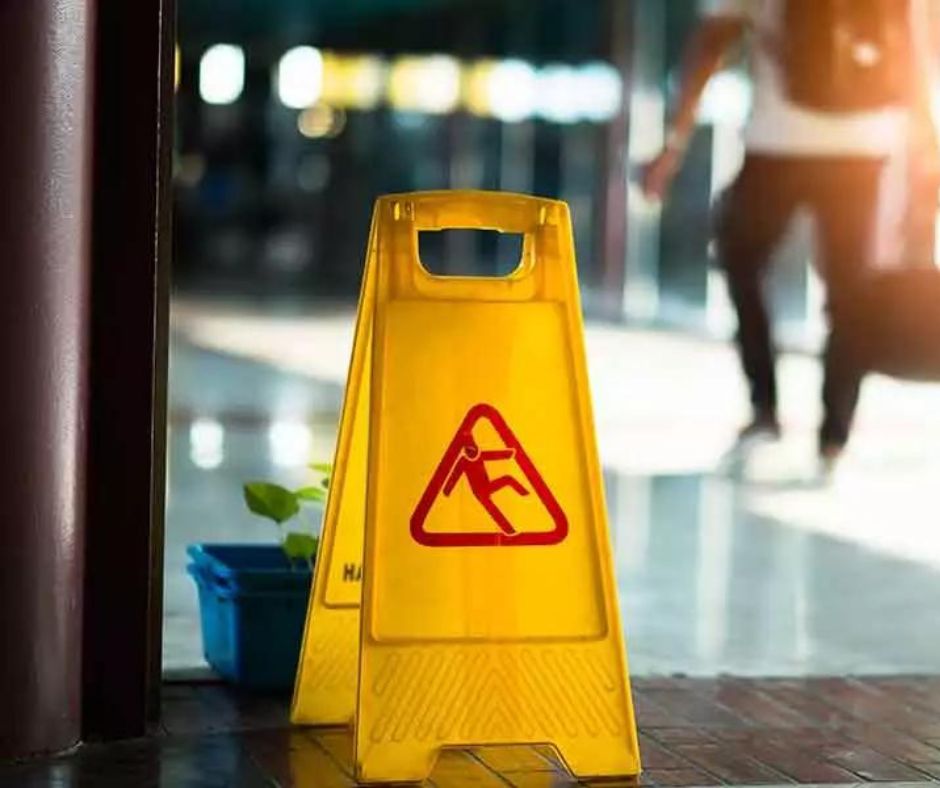
Falling flat on your face might seem like a minor inconvenience. However, the impact of a fall can range from mild discomfort to life-altering consequences. While some falls might result in a bruised ego and a sore backside, others can leave you facing significant injuries and a long road to recovery. This blog post delves into the common slip and fall injuries and their severity, symptoms, and potential long-term effects. We’ll also explore what to do immediately after a fall, treatment options, and the importance of seeking legal and medical guidance in Washington State.
The Spectrum of Slip and Fall Injuries
The severity of a slip and fall injury depends on several factors, including your age, your overall health, and the surface you fell on. Here’s a breakdown of some of the most common injuries and details to help you recognize them.
Broken Bones
Falls can cause fractures in any bone, but the most common are wrists, arms, hips, and ankles. Symptoms include intense pain, especially when attempting to move the affected area, swelling, bruising, and difficulty bearing weight on the injured limb.
Traumatic Brain Injuries (TBIs)
A blow to the head during a fall can lead to a TBI, ranging from mild concussions to more serious injuries affecting memory, speech, and coordination. Watch out for headaches, dizziness, confusion, loss of consciousness (even briefly), nausea, and vomiting. Be aware that some concussion symptoms may not appear immediately.
Spinal Cord Injuries
Spinal cord injuries are some of the most devastating injuries from falls, potentially leading to paralysis or loss of sensation. Back pain, weakness, numbness, and difficulty controlling limbs are all red flags. Depending on the location and severity of the spinal cord injury, loss of bladder or bowel control may also occur.
Soft Tissue Damage
This broad category encompasses sprains, strains, and muscle contusions (bruises). While often less serious than broken bones, they can cause significant pain, swelling, and limited mobility for weeks or even months. Symptoms include localized pain, tenderness, bruising, and difficulty moving the affected joint or muscle. Sprains involve ligaments, while strains affect muscles or tendons.
Lacerations and Cuts
Falls can cause cuts and scrapes, especially if you land on a rough surface. While most heal on their own, deeper lacerations may require stitches to close the wound and prevent infection. Watch for signs of infection like redness, swelling, and pus.
Facial Injuries
These can range from minor cuts and bruises to broken noses, dental injuries, and even eye damage. Be aware of any changes in vision or difficulty breathing after a facial injury.
Potential Long-Term Effects of Slip and Fall Injuries
While some injuries heal completely, others can have lasting consequences. Here are some potential long-term effects of slip and fall injuries:
Chronic pain
The initial pain from fractures, sprains, and TBIs can linger for months or even years after the initial accident. This chronic pain can significantly impact your daily life, limiting your ability to work, participate in hobbies, or even enjoy everyday activities like walking or sleeping comfortably.
Loss of mobility
Depending on the severity of the injury, a fall can lead to a permanent loss of mobility. Broken hips, for example, can significantly reduce your ability to walk or climb stairs independently, especially for older adults. Nerve damage from spinal cord injuries can cause muscle weakness, paralysis, and a lifelong dependence on assistive devices like wheelchairs or walkers.
Neurological issues
Falls can significantly impact the nervous system, especially in cases of TBIs. Memory problems, difficulty concentrating, dizziness, and balance issues are all potential long-term consequences. These can affect your ability to work, manage daily tasks, and maintain relationships.
Psychological impact
The emotional toll of a slip and fall injury shouldn’t be underestimated. The fear of falling again, often called post-fall syndrome, can lead to anxiety and restrict your daily activities. Additionally, the trauma of the accident itself can trigger depression or PTSD.
Remember, this is not an exhaustive list. The long-term effects of a slip and fall injury can vary greatly depending on the individual and the specific circumstances of the fall.
Taking Charge After a Fall: Immediate Steps for Your Safety
The moments following a fall can be disorienting, but taking swift action can make a significant difference in your recovery. Here’s what to do to ensure your safety and protect your rights:
- Seek medical attention. Even if you feel okay initially, getting checked by a doctor is crucial to rule out any underlying injuries.
- Document the scene. If possible, take photos of the location where you fell, including the hazard that caused it. Note the date and time of the accident.
- Report the fall. If the accident happened on someone else’s property, immediately report it to the manager or owner.
- Keep records. Save all medical bills, receipts, and documentation related to the accident.
Following these steps can help you take control of the situation after a fall and protect your rights. Don’t hesitate to prioritize your health and well-being by seeking medical attention and documenting the incident.
Treatment Options: Mending the Damage
The treatment for a slip and fall injury depends on the specific injury and its severity. Here’s a glimpse into some potential treatment options:
- Immobilization—involves casting a broken bone or using a sling for an arm sprain;
- Physical therapy—rehabilitation exercises can help you regain strength, flexibility, and mobility;
- Medication—pain relievers, muscle relaxants, and anti-inflammatory drugs might be prescribed to manage pain and inflammation; and
- Surgery—in some cases, surgery may be necessary to repair fractures or address spinal cord injuries.
Following your doctor’s recommendations and completing the prescribed treatment plan is crucial for optimal healing and recovery after a slip and fall injury. For those wondering about the timeframe to file a claim, be sure to familiarize yourself with the slip-and-fall statute of limitations in Washington. Acting within this period is crucial to ensure your case is heard.
Don’t Let a Fall Take You Down
At Brett McCandlis Brown & Conner, we understand the physical, emotional, and financial toll a slip and fall injury can take. With over 40 years of experience serving Washington State, our dedicated team of personal injury lawyers will fight for the compensation you deserve. We have convenient office locations across the state, making it easy to connect with an attorney who can guide you through every step of the process. Contact us today for a free consultation. Let us help you get back on your feet.


